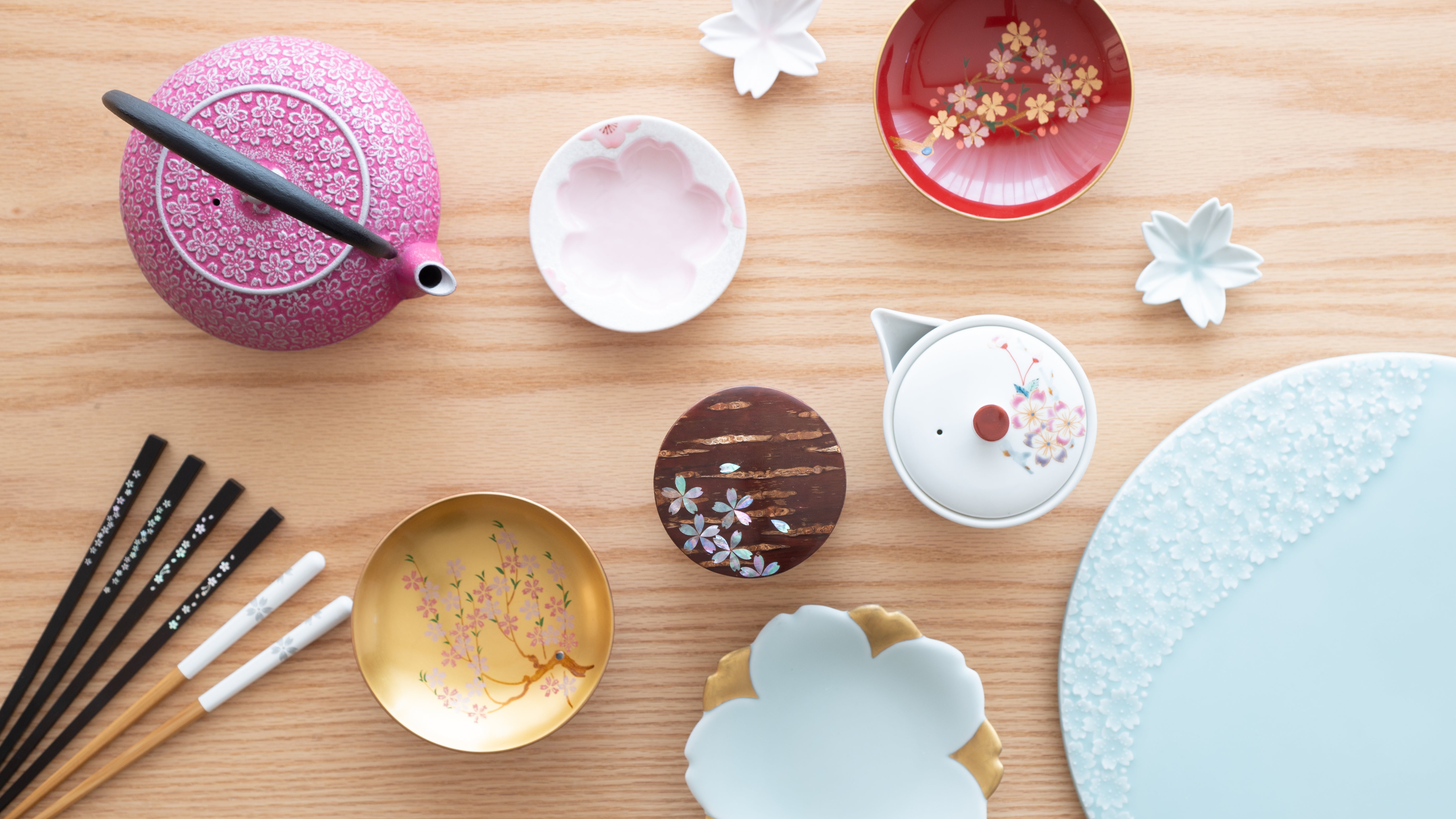
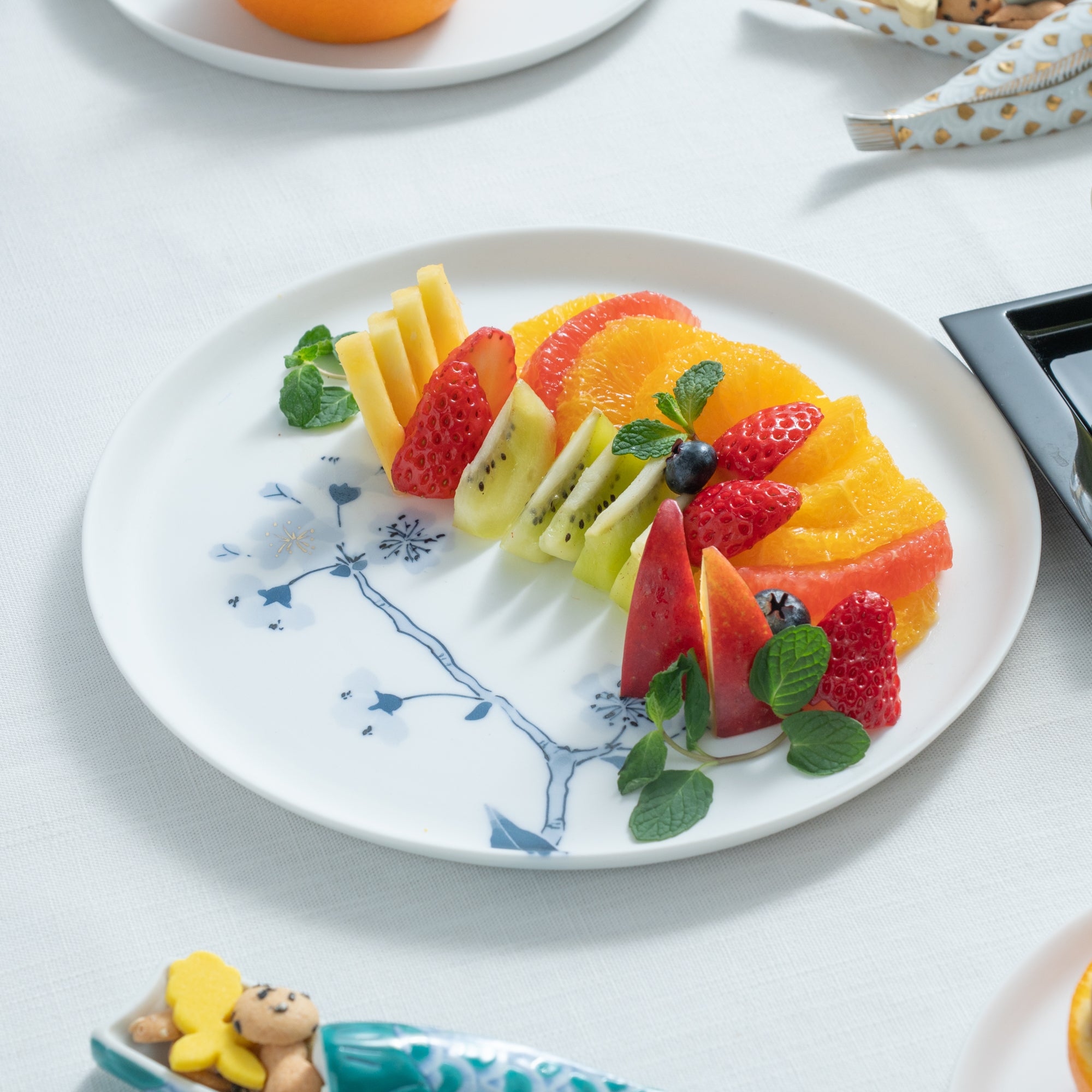

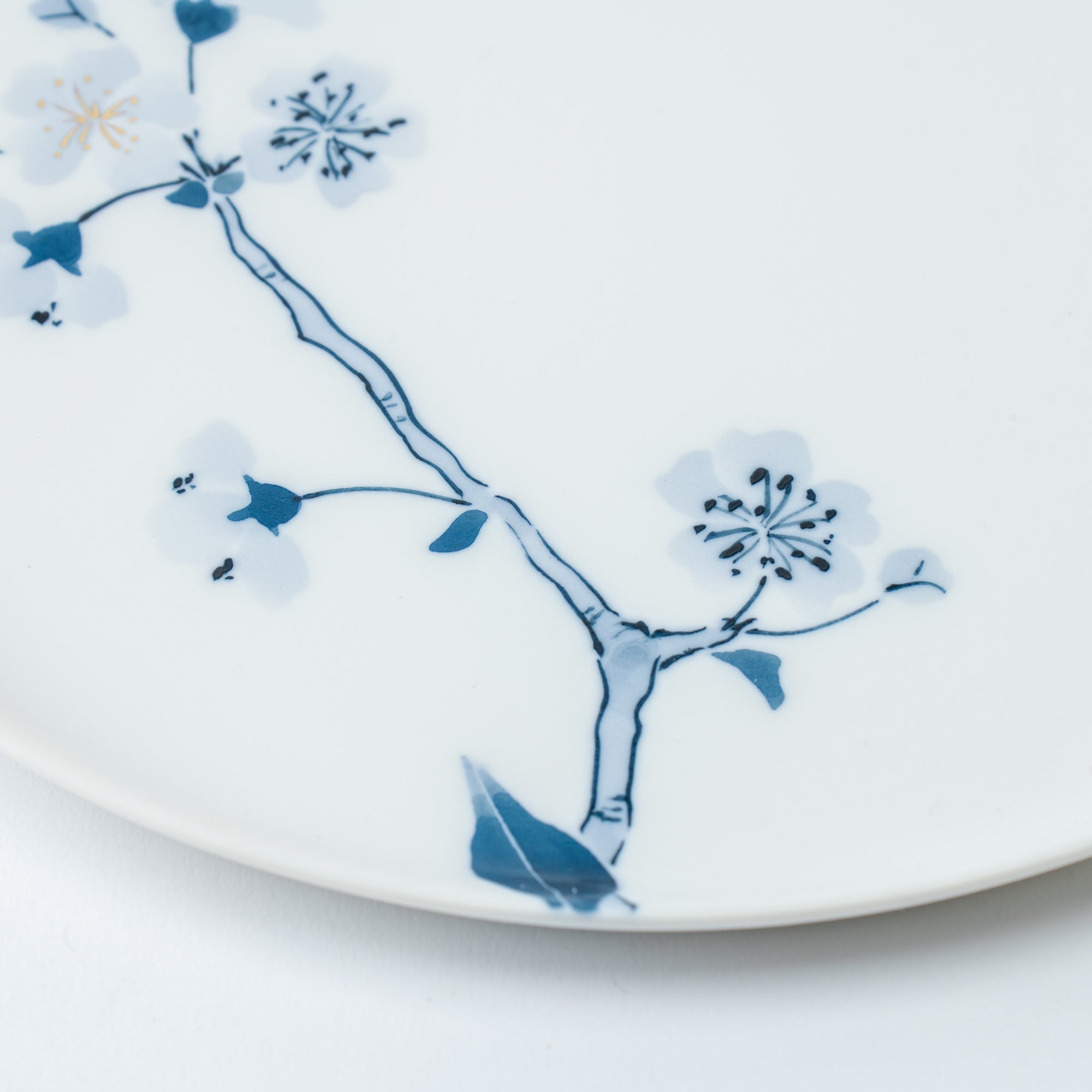



Plato de cena con flor azul de sakura
Estimated Shipping Widget will be displayed here!
Lleve la gracia tranquila de sakura a su mesa con este plato de porcelana azul y blanca, adornado con Seto algúntsuke—el icónico estilo azul y blanco. Una sola rama se extiende por la superficie, floreciendo con suaves pétalos en tonos pálidos y anclada por un tronco de contornos suaves, un diseño original hecho para Musubi Kiln.
El diseño floral está pintado a mano con un pincel grueso utilizando gosu, un pigmento de cobalto. Esta técnica tradicional permite sutiles variaciones de tono, desde un índigo intenso hasta un azul tenue, capturando la suave superposición de cada pétalo y hoja. Las delicadas hojas se extienden hacia afuera, aportando movimiento a la composición floral, que cobra vida gracias a la firmeza y la refinada destreza de un artesano experimentado.
Con su superficie suavemente mate y borde bajo, este plato ofrece un borde limpio que ayuda a centrar la comida y le da a cada plato un aspecto compuesto, ya sea que esté sirviendo un plato principal o un postre colorido para finalizar una comida especial.
Bellamente empaquetado en una caja a juego con el mismo motivo de sakura, también es un regalo simple y bien considerado.
DETALLES
| Quantity |
1 |
| Size | D 23,0 cm (9,1 pulgadas) x H 1,5 cm (0,6 pulgadas) |
| Weight | 362 gramos (12,8 onzas) |
| Material | Porcelana |
| Package Type | Caja de papel |
| Microwave | Sí |
| Dishwasher | No |
Fabricante / Marca
Fundado en 1919, SINGAMA es un taller de cerámica familiar en Shinano, un pequeño pueblo enclavado en las colinas del noreste de la ciudad de Seto, prefectura de Aichi. Utilizando arcilla local de alta calidad, el taller se especializa en cerámica de Seto. algúntsuke—Porcelana blanca adornada con delicados diseños en azul índigo. Cada pieza está pintada a mano y elaborada para expresar comodidad, con formas delicadas y calidez que resultan ideales en la mesa de todos los días.
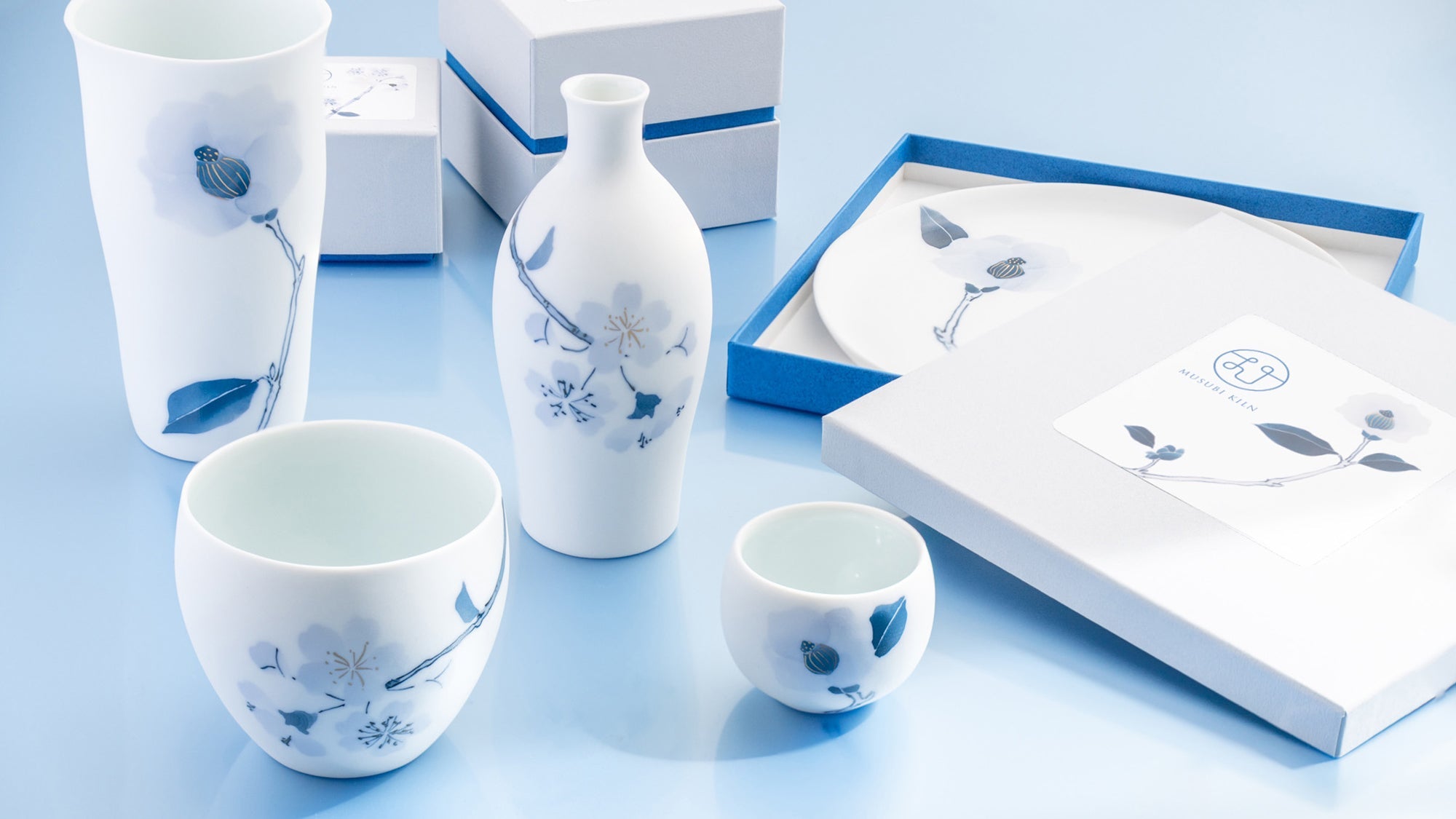
Artesanía
Fabricada en la ciudad de Seto y sus alrededores, en la prefectura de Aichi, la cerámica Seto abarca una amplia gama de piezas que reflejan siglos de artesanía e innovación. Como uno de los Seis Hornos Antiguos de Japón (Rokkoyo), la región de Seto ocupa un lugar destacado en el patrimonio cerámico del país. También fue pionera en la producción en masa de porcelana, y su uso generalizado dio origen al término setomono—un término que todavía se utiliza hoy en día para referirse a la cerámica en general.
Destacada por su variedad estilística, Seto es una de las pocas regiones de Japón donde se elaboran tanto gres como porcelana. Desde la sencilla vajilla de uso diario hasta piezas más refinadas, la cerámica de Seto sigue marcando la vida cotidiana con creaciones que equilibran tradición y creatividad.
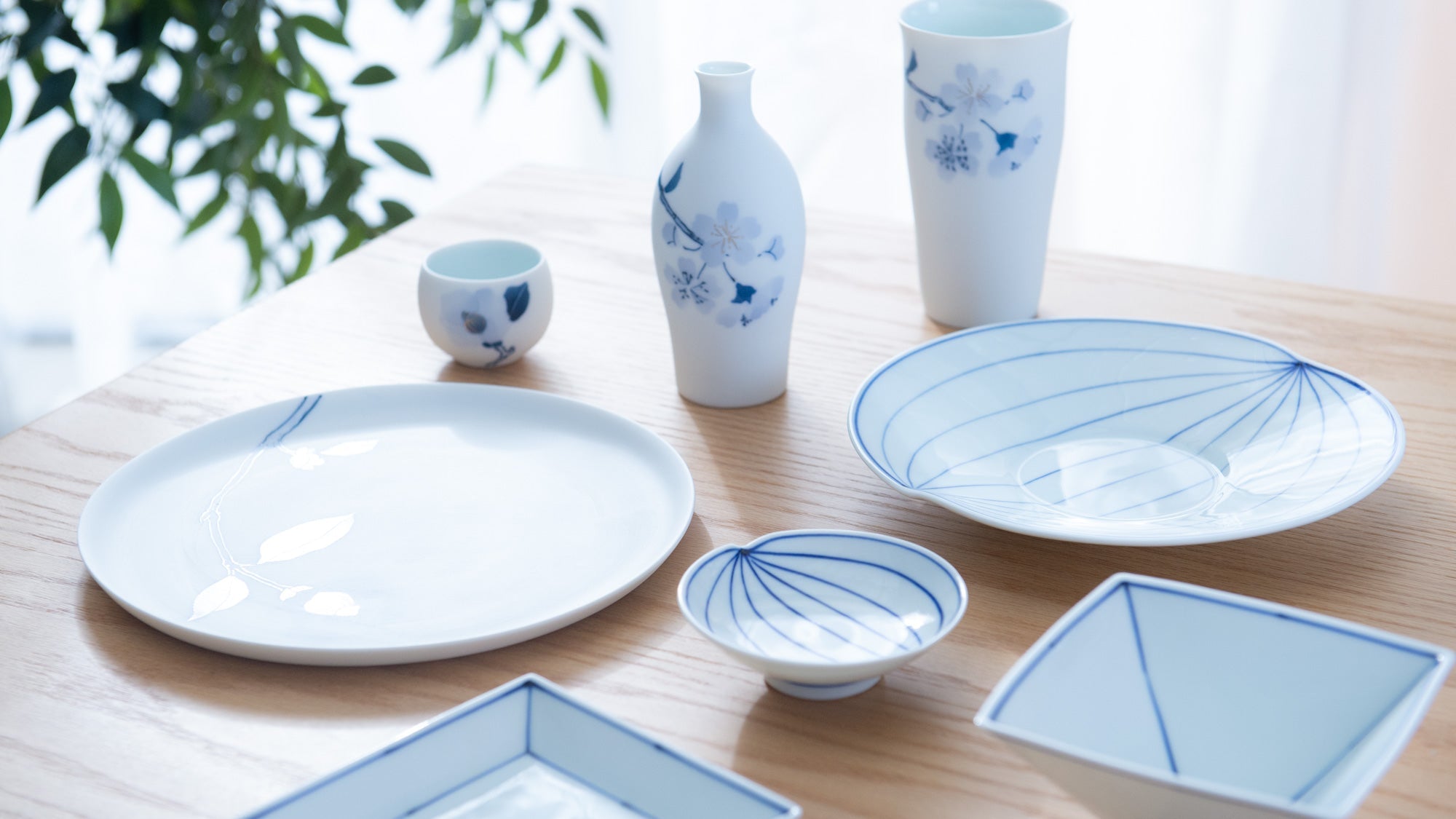
notas
Elige opciones







Estimated Shipping Widget will be displayed here!
Platos de cena
Esta categoría se aplica a platos de entre 21 cm (8,3 pulgadas) y 30,9 cm (12,2 pulgadas). Para las comidas tradicionales japonesas, los platos de unos 20 cm (8 pulgadas) son los más prácticos. Por otro lado, para servir una cena de un solo plato o pasta, los platos de unos 25 cm (10 pulgadas) son más convenientes.
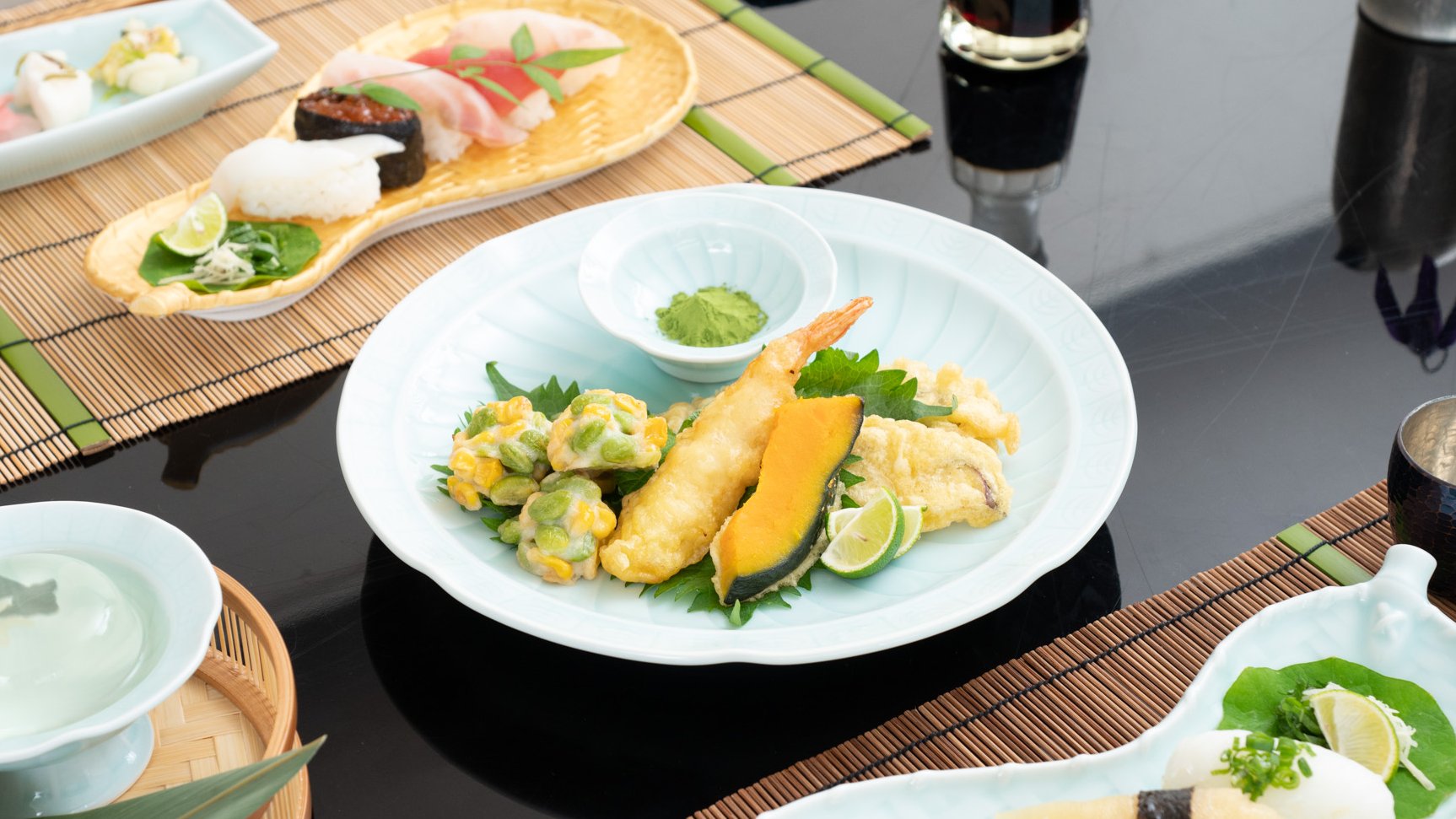
sakura
De nuestra colección de vajilla y vajilla japonesa, hemos reunido artículos con motivos de flores de cerezo que muestran la belleza de Japón. Esperamos que estas piezas, adoradas por personas de todas las edades y regiones, sean bienvenidas en su hogar.
